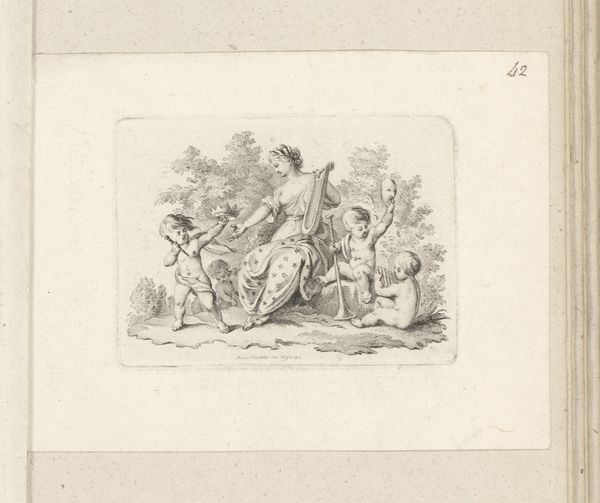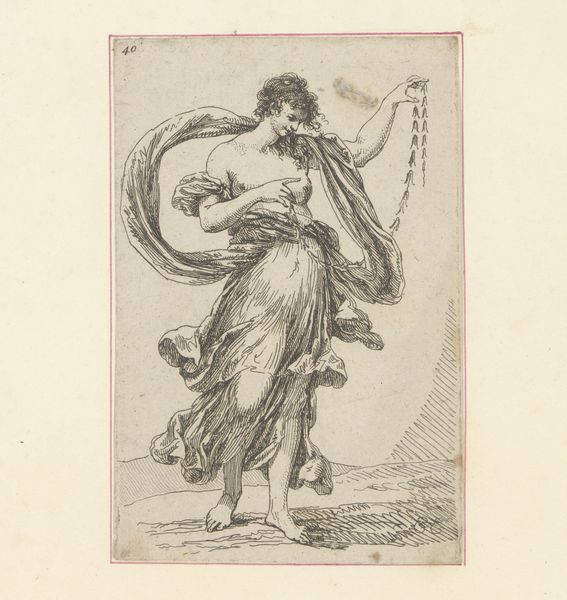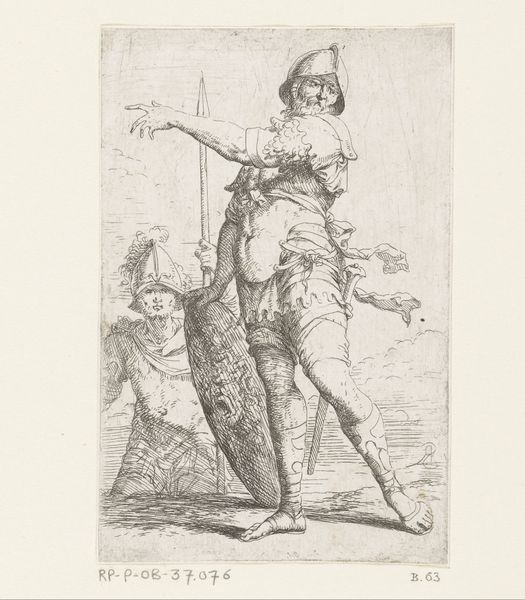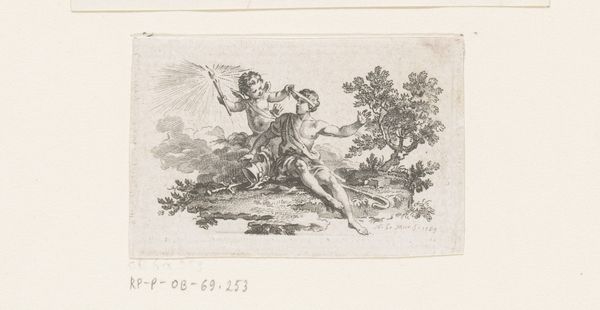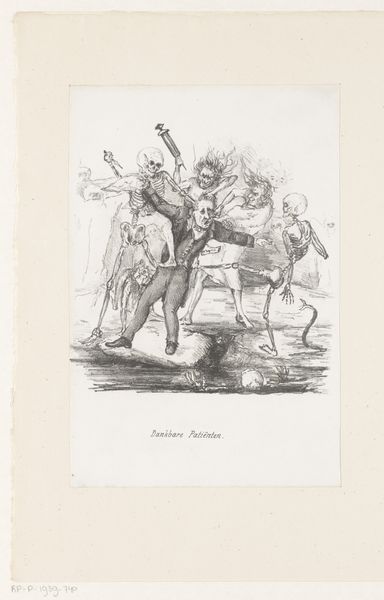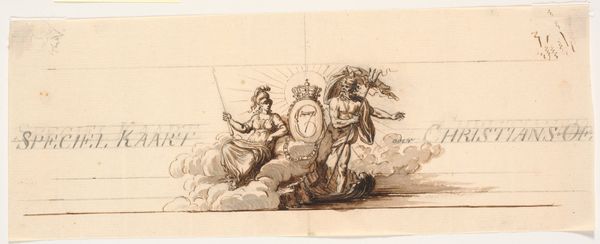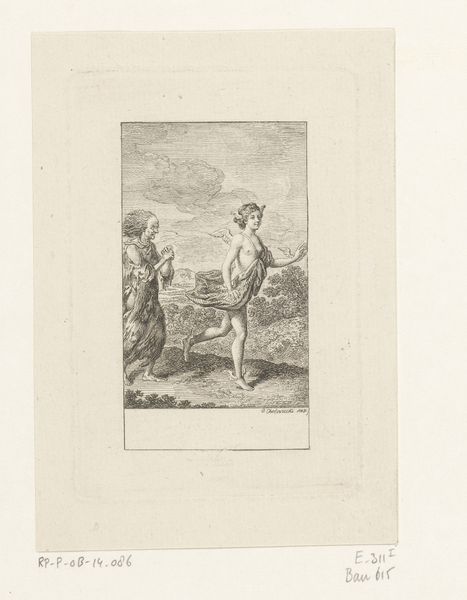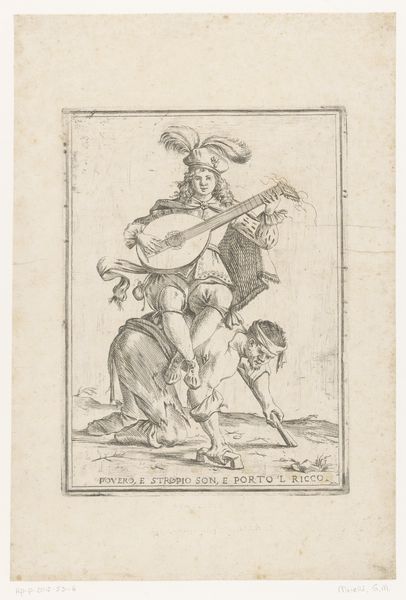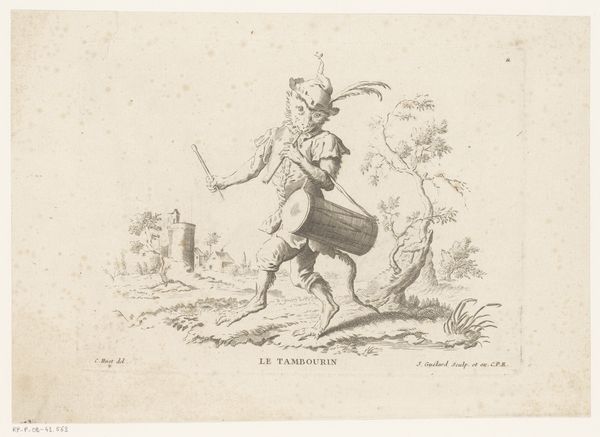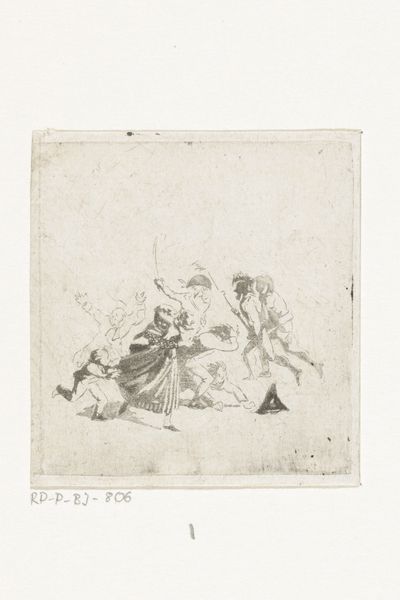
print, etching
#
neoclacissism
#
allegory
# print
#
etching
#
figuration
#
line
#
history-painting
Dimensions: height 126 mm, width 84 mm
Copyright: Rijks Museum: Open Domain
Curator: Edward Edwards created this etching, “Allegorie op de kunsten”, sometime between 1785 and 1790. You can currently find it here at the Rijksmuseum. What’s your initial impression? Editor: There's a certain breezy lightness. Despite being an etching, the figure seems almost to float, and the Cupid adds to that ethereal feel. I’m immediately drawn to the scroll and the instruments. Curator: The style points to Neoclassicism, which looked back to classical antiquity for its ideals. Prints like these helped circulate artistic ideas widely at the time, fostering a shared visual culture. Notice the female figure, an embodiment of the arts themselves. These allegorical representations became quite popular as they imbued intellectual concepts with vivid, relatable forms. Editor: Yes, allegories distill complex ideas into easily understood symbols. She holds a laurel wreath—a symbol of victory, a traditional reward for excellence, linking artistic creation to the idea of achievement. The palette and brushes represent painting, and she stands beside a Cupid...holding, rather menacingly, I might add, a pair of scissors. What’s that all about? Curator: That’s a reference to controlling and pruning artistic pursuits, and perhaps keeping fantasy at bay. "Tunctula et Chimera Auersa" is written on the banner. Edwards suggests discipline and precision are as important as inspiration and creativity in artistic practice, reflecting Neoclassical ideals. Art should strive for order and clarity, not descend into chaotic, unrestrained flights of fancy. Editor: So, the message really encapsulates a time where emotional expression was curbed in favour of intellectual articulation. I think its greatest contribution lies in its insight to this philosophical debate of this period: art created using imagination vs using rules and reasoning. Curator: Precisely. The print not only demonstrates the skills that Edwards possessed, it also mirrors this particular era of transformation where new aesthetic values emerged within intellectual circles. Editor: Seeing it through that historical lens provides a richer understanding. It’s more than just a pretty figure. It represents a society grappling with fundamental ideas about artistic expression.
Comments
No comments
Be the first to comment and join the conversation on the ultimate creative platform.
